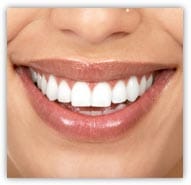Best Teeth Whitening Techniques and Teeth Whitening at Home
Tooth whitening is a cosmetic dentistry procedure that lightens teeth and helps to remove stains and discoloration.
It is the most popular treatment by both men and women alike and the treatments available range from one-hour one-time dental visits to take-home do-it-yourself kits.
Tooth whitening is popular because it can significantly improve the appearance of your teeth at much less cost and inconvenience than other techniques.
Yellow or stained teeth are a common problem most Americans will develop at some point in their lives but can remedy with proper treatment.
Our teeth contain enamel, a porcelain-like surface that started out sparkling white. Tooth enamel is designed to protect the teeth from the effects of chewing, gnashing, trauma and acid attacks caused by sugar.
Over time, our enamel starts to hold stains within its pores and becomes more transparent and permits the yellow color of dentin, the tooth’s core material, to show through.
As more stains and debris accumulate because of normal wear and tear and eating habits, the teeth develop a dull, lackluster appearance. Tooth whitening exists to remove the stains and debris associated with diet and aging.
Types of Tooth Stains

There are two types of staining as related to teeth: Extrinsic Staining and Intrinsic Staining
Extrinsic Staining– Extrinsic stains are caused by external factors such as coffee, red wine, tea, other dark-colored foods and drinks, tobacco and routine wear and tear.
Essentially they are a natural part of life but they are unsightly and can be removed. Superficial extrinsic stains can be removed with good hygiene techniques such as regular brushing and dental check-ups with cleanings.
More stubborn stains can be removed with more involved efforts like teeth bleaching or whitening.
Intrinsic Staining– Intrinsic stains occur much deeper in the tooth than extrinsic stains, forming in the interior of teeth.
They can result from trauma, aging, exposure to minerals (like tetracycline), during tooth formation and/or excessive ingestion of fluoride.
Teeth Whitening vs. Teeth Bleaching
According to the FDA, the difference between bleaching and whitening is that the term “bleaching” is permitted to be used only when the teeth can be whitened beyond their natural color and when the products contain bleach. Whitening refers to restoring a tooth’s surface color by removing dirt and debris.
The terms are generally mistakenly used interchangeably even though they have different meanings. Whitening sounds less harsh than bleaching and therefore is used even when products contain bleach.
It really is a marketing technique more than anything else although there are some distinctions that should be made between over-the-counter (OTC) whitening and dentist bleaching, including:
Strength of Bleaching Agent- Typically OTC products and take-home products usually contain 3% to 7% hydrogen peroxide bleaching agent whereas in-office teeth whitening products contain 15% to 43% hydrogen peroxide.
Mouthpiece Trays- Mouthpiece trays from the dentists as opposed to OTC trays are custom molded to fit the exact impression of your teeth.
This allows for maximum contact between the whitening gel, which is applied to the mouthpiece tray, and the teeth.
A custom mouth tray also minimizes the gel’s contact with gum tissue, which can lead to gum irritation that may be associated with trays that are not custom-made.
Additional Protective Measures– In an office setting, the irritation and concerns associated with the gums from gel contact are protected by your dentist as an extra preventive measure.
Supervised vs. Unsupervised Process– A dentist-supervised at-home or in-office treatment may be safer because it allows the dentist to view your medical history and determine which course of whitening treatment is most appropriate for you. With OTC treatments, you are left on your own.
The American Dental Association (ADA) has approved the use of dentist-dispensed home-use products containing 10% carbamide peroxide and office-applied products containing 35% hydrogen peroxide.
Over-the-counter bleaching products are not endorsed by the ADA because the organization believes that professional consultation is important to ensuring safe and effective use.
Just because a product does not meet the ADA standard does not mean it is not safe or ineffective. It is wise to consult with your dentist if you are concerned about a product you are interested in trying.

Causes of Tooth Staining
Food and diet are the most common culprits of teeth discoloration, but there are a number of causes that can incite discolored teeth.
Below is a list of the top causes of teeth stains and discoloration according to a representative of the American Dental Association:
Medicine– Some over-the-counter medications and antibiotics can dull your teeth. Minocycline, a derivative of Tetracycline (a bacteria-fighting antibiotic) has been shown to turn teeth yellow in small children and can cause a permanent bluish-gray stain in adults.
There are certain antihistamines that can also discolor teeth. Your dentist will able to tell you if your medications are impacting the color of your teeth and if there may be alternatives to their use.
Excessive Fluoride– Fluoride in large concentrations can cause chalky white spots to appear on your teeth. Fluoride is generally good for teeth however people can get too much fluoride from drinking water with high concentrations of fluoride, or from excessive use of fluoride-containing toothpaste. A good suggestion would be to use a sensible pea-sized amount of toothpaste each time you brush.
Genetics and Aging– As you age the enamel of your teeth wears thin and the natural yellow or brown color of the underlying dentin layer shows through.
Also, genetics play a role as some people just have naturally brighter or thicker enamel than others. Dental Damage- Trauma such as injury or falls can produce sizable cracks in the teeth, which collect large amounts of stains and debris.
Dark Drinks– A good rule of thumb here is that “any drink that can stain your carpet can stain your teeth.” Coffee, tea, and red wine are well known for their tooth staining capabilities; however other dark liquids such as fruit juice, soda, and even beer can damage your smile.
Drinking through a straw to protect your front teeth or swigging some water around after drinking dark fluids can offset their staining power.
Colorful Foods– The habitual consumption of deep colored heavily pigmented foods such as cherries, blueberries, cranberries and soy sauce can quickly stain teeth. To avoid this brush your teeth soon after eating these types of foods.
Bad Oral Hygiene– An obvious reason for dull or lackluster teeth, poor oral hygiene means that stain-producing substances are not routinely removed from your teeth and will allow bacteria to build up.
The more you brush and floss properly the better chance you have at fighting off yellow and green stains that can result from bad habits.
Teeth Whitening Options & Costs: Teeth Whitening at Home and at the Dentist
There are generally considered to be three teeth whitening options available today. The options rely heavily on your specific conditions and your preferences of treatments.
Your dentist can help you make the best determination and discuss which options will fit your goals and budget. The choices include over-the-counter, in-office whitening, and take-home kits.
Over-the-Counter– Over-the-counter whitening kits are the cheapest and most convenient of the teeth whitening options. These include whitening toothpaste, gels, rinses, strips, and trays.
This type of whitening is recommended for people who have no fillings and healthy teeth. These types of products are typically considered to be the least effective, brightening teeth just a few shades. These types of products cost anywhere from $20 to $100.
In-Office Whitening– In-office whitening offers the benefits of a significant color change in the shortest period of time.
This process involves the use of a high-concentration peroxide gel, applied to the teeth by your dentist who ensures that the gums and mouth are protected from the application.
The gel remains on the teeth for several 15 to 20-minute intervals that add up to about an hour. The advantage of these procedures is that the results are immediate however they tend to be the most expensive, costing upwards of $500.
Take-Home Kits– Take-home kits offer the convenience of at your leisure teeth whitening and provide professional results.
The kits incorporate lower-concentrate peroxide gels that are applied in custom-made trays and worn in the mouth overnight or for a select time period during the day. These types of kits cost $100 to $400. These can only be provided by your dentist.
Zoom Whitening
Zoom Whitening is an in-office bleaching process that is widely known for its ability to quickly brighten teeth because of effects of discoloration.
The complete procedure takes about one hour, but a preliminary evaluation and teeth cleaning is recommended prior to the treatment. Just as in a more common in-office whitening procedure, the lips and gums are safely covered.
Then the dentist will apply the patented Zoom hydrogen peroxide whitening gel. The difference with Zoom is that its technique incorporates a special light that penetrates the teeth to break up stains and discoloration.
During the process, the patient is free to relax, watch TV, or listen to music. Zoom costs on average about $500 and the cost includes the in-office treatment as well as supplemental take-home trays designed to maximize results.
